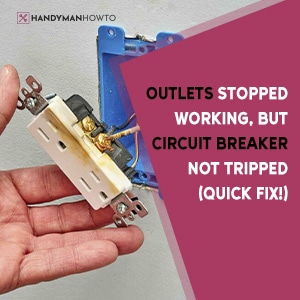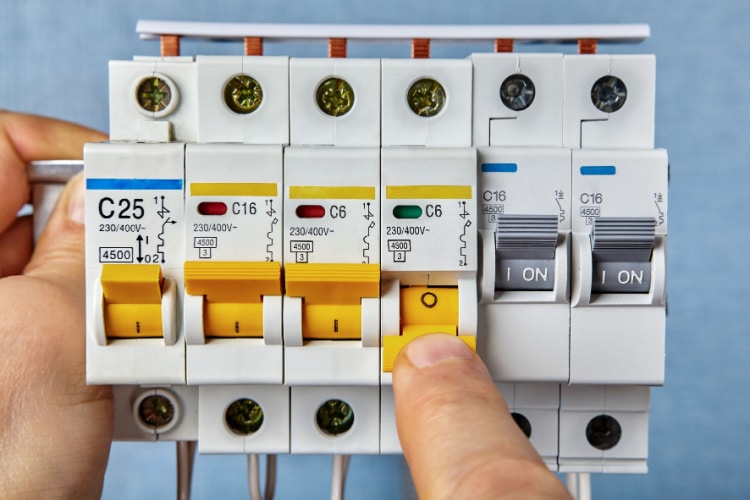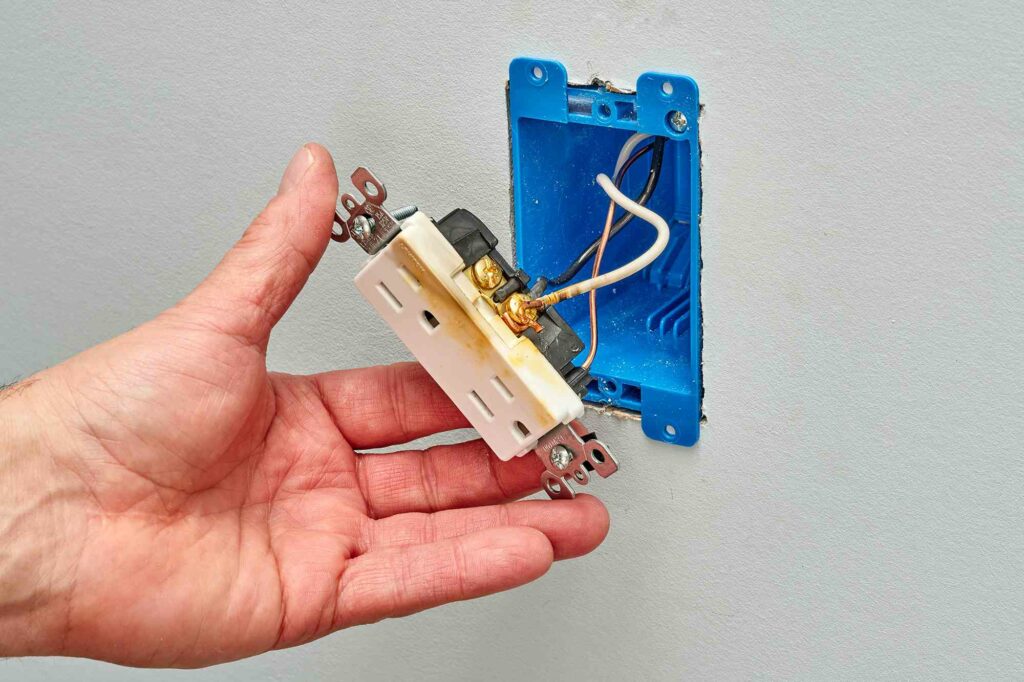It’s incredibly frustrating when one or more outlets suddenly stop working, but if you find that the problem isn’t a tripped circuit switch, the situation becomes even more confusing.
So what now? What to do after you check and realize that flipping the circuit breaker’s switch isn’t the solution to your problem?

We’ll show you some fast solutions – as easy as turning your circuit breaker back on – you should attempt before contacting an electrician.
Understanding Your Electrical System

Before we get to the potential fixes for inactive outlets when circuit breakers haven’t tripped, let’s first try to understand the electrical system a little better.
The electrical system in your house comprises many circuits linked to your circuit breaker panel. Each circuit runs a different section of your home, such as a bedroom, living room, or kitchen, and operates a set of outlets, switches, and lights from that area.
If the current in a circuit surpasses a predefined threshold, for example, due to an overload or a lightning strike, the breaker will activate and cut off power to the outlets or lights wired to that particular circuit. Such action is needed to protect your electrical system and devices from damage or fire.
Top Causes of Outlet Failure
Now, if your outlets have stopped working, but the circuit breaker hasn’t tripped, there are a few possible causes behind the problem, such as:
- Faulty outlet: Over time, outlets become worn or damaged and must be replaced.
- Unsecured wires: The screws that keep the wires in position may become loose and cause the wires to separate from the outlet.
- Too many power surges: When your circuit has been subjected to excessive power surges, the outlets may stop working altogether.
- Tripped GFCI outlet: If an outlet stops working and is protected by a GFCI (Ground Fault Circuit Interrupter), the GFCI may have tripped and ceased providing power to all connected outlets.
- Defective circuit breaker: Even if it hasn’t tripped, it could be faulty or not making appropriate contact with the outlets.
- Old outlets: Outdated outlets in the electrical system may also stop receiving electricity.
Quick Fixes for Dead Outlets

If your outlets have stopped working, but the circuit breaker hasn’t tripped, there are a few things you should check. We’ll walk you through each of them.
1. Make Sure a Switch Doesn’t Control the Outlet
To begin, confirm a switch doesn’t control the outlet. Some houses have outlets wired to a switch, so you must turn it on for the socket to receive electricity. If you have that kind of outlet, turn on the switch to see if the power returns.
2. Check the Other Outlets in the Same Circuit
If numerous outlets from the same circuit aren’t providing electricity, the issue isn’t with the outlet but with the circuit. The simplest way to test this is to plug a device into all outlets installed on the same circuit. If none work, your circuit breaker is faulty and should be examined by an expert.
3. Ensure That a Dead Device Isn’t the Problem
We might be led to believe that an outlet has failed when, in fact, we are working with a faulty gadget. To see if this is the case, put another gadget into the same outlet. If the device receives electricity, it’s time to replace the defective device with a new one.
4. Check for a Tripped GFCI Outlet
Another possibility is a faulty GFCI (Ground Fault Circuit Interrupter). GFCI outlets are frequently located in bathrooms, kitchens, garages, and outdoor spaces. They safeguard individuals from electric shock by turning off the power when there is a ground fault.
If a GFCI outlet trips, it will stop electricity to all outlets that receive protection. Find the GFCI outlet and hit the “reset” icon to resolve this.
5. Reset the Circuit Breaker
If the GFCI outlet was not the solution to your issue, you should examine the circuit breaker next. Although, if the circuit breaker didn’t trip, it might be defective or not making appropriate contact with the outlets. So, go ahead and reset it: turn the circuit switch off and then back on.
6. Secure Loose Wires
If resetting the circuit switch hasn’t returned power to your outlets, the issue could be loose wires. Over time, the screws that keep the wires in position become loose, causing them to separate from the outlet and eventually cut all power.
To correct this, switch off the electricity to the outlet at the circuit breaker box, remove the cover plate from the outlet, and tighten the screws that secure the wires to the outlet.
7. Replace Your Dead Outlets
If none of the above solutions work, the issue could be a defective outlet you must change.
Another reason to replace a receptacle is if it has reached the end of its life. As a receptacle matures, its connections can become worn or corroded, preventing electricity from flowing.
It’s critical to note that if you are not familiar with electrical work, you should not try to change an outlet on your own. Electrical work is hazardous and should only be carried out by a certified technician.
Conclusion
In conclusion, if your outlets have stopped working, but the circuit breaker isn’t tripped, several reasons could be the cause, followed by some easy fixes — so let’s summarize everything we’ve learned from our informative article!
The most common reasons for dead outlets are faulty or outdated outlets, loose wires, malfunctioning circuit breakers from too many power surges, or tripped GFCI outlets.
Before calling an electrician, check that a switch does not regulate the receptacles. Then, check other receptacles on the same circuit to see if the issue is with the circuit itself.
If only one outlet is not functioning, determine if you are dealing with a faulty gadget or socket. Another item to check is the GFCI outlet. If it has tripped, switch it back on. Check for loose cabling or outdated outlets as well.
Last but not least, use caution when dealing with electricity and cut off the power to the circuit before making any fixes!